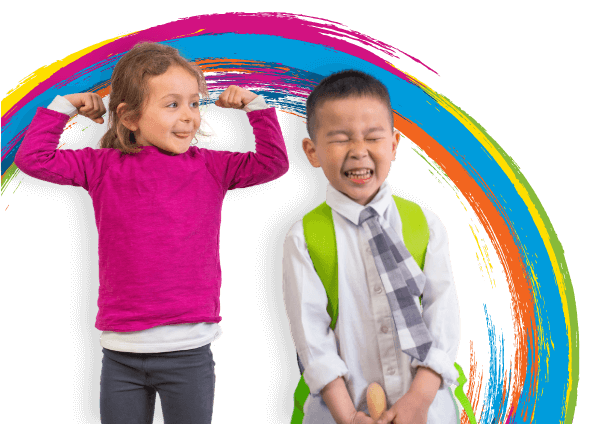 More than 2 million children have learnt English through the Helen Doron methodology. What is the secret to your success? How does the method work?
More than 2 million children have learnt English through the Helen Doron methodology. What is the secret to your success? How does the method work?
There are many features of the methodology that contribute to its success, let’s focus now on the concept of spiral learning. Spiral learning is a relatively new concept in education. Rather than trying to master a subject all at once, spiral learning teaches a concept gradually and repeatedly, reinforcing concepts over time. The idea is that each time a student encounters the topic; the student expands their knowledge or improves their skill level. It is a very natural process.
How is spiral learning a natural process?
Think about how you taught your baby. Did you bring him into the kitchen and say, “We are going to sit here until you learn all the utensils—spoon, cup, fork, table and so on.” I imagine you did not do this and rather, taught him through the process of active participation. ‘Here is your cup. What is in your cup? Ooh, yes you have juice in the cup. Would you like a spoon to put into your cup? And so on…’
What you are doing is using the language and you are repeating the word and using sentences to emphasize the words and ideas you are trying to get across. It is an expected way of learning. Nobody has sat down in the garden with their young child and said, “Alright we are going to learn everything about the garden and won’t go back inside until you have mastered the information. “It’s not a natural way to learn, it’s not how we do things. We learn information in context and we learn it over time and it’s an intuitive way of learning. My method teaches 70% familiar content and 30% new ideas because children need to be introduced to the new, even if they don’t yet know the old thoroughly. It is essential to remember that children are constantly growing and changing, even from week to week. A child one week is completely different from the next week and for sure, when there is a month between reintroducing ideas, there can be a whole universe between how the child grasps information and processes what he is learning.
Back in the 1980s, when I first began teaching English, we had just produced, the English For All Children programme. Book 2 taught parts of the body and I had a feeling that one of my group of 3 to 5 year olds wasn’t ‘getting it’. I felt they didn’t know the information well enough, so I decided to teach the didactic things that I knew that everyone else taught, even though it wasn’t my teaching methodology or philosophy to do so. I decided that the class would learn the parts of the body, I had a full arsenal of activities, and games— from bingo to lotto to memory game to movement, hide, and seek. We came out of that lesson and I said to the class, “That’s it! You know all the parts of the body. You are brilliant! You can say shoulders, knees, toes and more. You can do all the things, I so proud of you.” To my amazement, the kids responded, “But we didn’t learn anything.” In astonishment I replied, “What do you mean we didn’t learn anything? We just spent ¾ of an hour learning the parts of the body and you know them really well.” They answered, “yes but we didn’t learn anything.” I suddenly realized they meant that they had not learnt anything new.
The students expected to learn something new. It isn’t that they expected to fully master a new concept. They might not pronounce the word properly 100 of the time but they were satisfied and knew that they would return to the idea again in the following weeks. Bit by bit, the knowledge would become firmly entrenched. It’s a little bit like the story of dying the cloth. When you dye a cloth in India, you will take the cloth, dip it into the colour, put it in the sun to dry, it fades, and then you re-dye until it is fast. Spiral learning is exactly like that. The children are exposed to something, they go out, they forget a bit of it, they return, learn it again and the process continues until they really know it, effortlessly.



